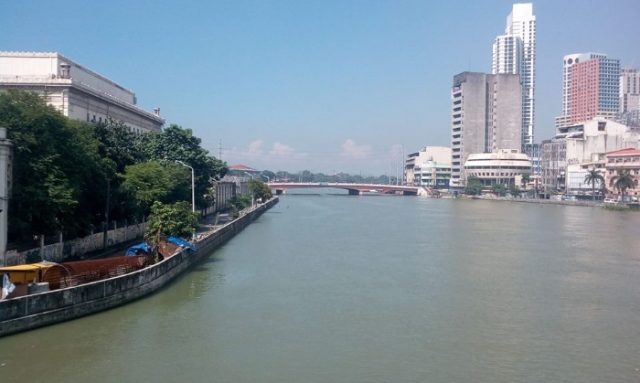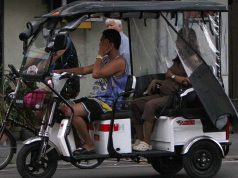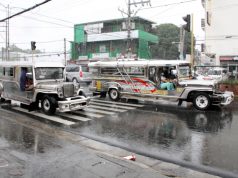
Transport advocates expressed opposition against the construction of an expressway over the Pasig River, citing environmental concerns.
The Pasig River Expressway Project (PAREX) is a 19.37-km elevated expressway that will connect the eastern and western portions of Metro Manila.
San Miguel Corporation will finance this P95-billion project following the success of the Skyway Project 3 that connects the North Luzon Expressway and the South Luzon Expressway.
PAREX is eyed to improve the traffic in Rizal, Cainta and Marikina City. It will also facilitate access to central business districts Bonifacio Global City in Taguig City, Makati City and Ortigas in Pasig City.
The proposed new thoroughfare will have six lanes and will be divided into three segments. It is expected to be completed by 2023.
The construction of this new expressway is reportedly set next month.
Concerns vs proposed elevated road
In a statement on April 22, transport alliance Move as One Coalition convenor Robert Y. Siy Jr. emphasized the need to shift from “car-centric” solutions to improve traffic to a more sustainable approach.
“It is high time that we shift away from the outdated car-centric transportation policies of the last century and instead embrace inclusive, people-centered, and sustainable approaches that are now being adapted as best practice all over the world,” Siy said.
We take a stand against the construction of PAREX, a proposed ₱81.5-bn, 19.37 km, 6-lane elevated highway running the length of said river, on the ff. grounds:
1. It will make congestion worse, not better.
2. It will ramp up the production of greenhouse gases in the PH.[2/3] pic.twitter.com/4yGCogFupC
— Move As One Coalition (@MoveAsOnePH) April 22, 2021
The organization also enumerated the following reasons why it is opposing the infrastructure project:
- PAREX will make congestion worse, not better.
- It will ramp up the production of greenhouse gases (GHG) in the country.
- It will contribute to toxic air pollutants from fossil-based motor vehicles.
- Building PAREX will go against the demand of a supermajority of Filipino taxpayers to prioritize investment for transport projects that move people and not cars.
- PAREX would make the revival of the Pasig River impossible.
Instead of building another elevated expressway, the coalition recommended investing the hefty budget to programs that will rehabilitate both the river and improve the public transport sector.
“The cost of building PAREX, an estimated ₱81.5 billion, be put to better use by investing in programs that will clean and revitalize the river and give people smarter and greener choices that will reduce their transport-related carbon footprint and promote more active lifestyles,” the group said.
“Such programs may include safe pedestrian pathways, protected bike lanes, electric-powered public transit, and river ferry systems along and across the Pasig River itself,” it added.
Another transport advocate MNL Moves also suggested on Twitter that instead of a new expressway, Pasig River’s waterfront should be converted into a space that “prioritizes people over cars.”
“We don’t need an expressway over Pasig River. What we need yesterday is to transform Pasig River’s waterfront as world-class public space that prioritizes people over cars. This will involve a visionary people-centered redesign process to give more spaces to walk and connect,” the tweet read.
We don’t need an expressway over Pasig River.
What we need yesterday is to transform Pasig River’s waterfront as world-class public space that prioritizes people over cars.
This will involve a visionary people-centered redesign process to give more spaces to walk and connect. pic.twitter.com/lT8RZFo9Ss— MNL Moves (@MNLMoves) April 21, 2021
Pasig transport planner Robert Anthony Siy said because of the approval of this project, the conservation of Pasig River is now up to the local government units and activists.
“Duterte’s government approved the Pasig River Expressway, which will cover the Pasig River in concrete, cover the city in smoke, and choke our streets with congestion and the bones and blood of children. It’s basically up to LGUs and activists to save us from it now,” Siy said.
SMC’s plan on Pasig River
In a recent statement, SMC said it would fund the clean-up of the Pasig River.
Reports said the preparations for this would be jointly undertaken with government agencies such as the Department of Environment and Natural Resources and the Department of Public Works and Highways.
Ramon Ang, SMC president and chief operating officer, said the company has already completed the initial bathymetric survey of the river.
Bathymetry, according to Business Mirror, “is the study of the ocean, lake, or river floors, to determine their topography and characteristics underwater.”
“While we will use science and utilize modern technology, this project can only succeed with the cooperation of all stakeholders,” Ang said.
“We are grateful for the support of [DENR] Secretary Roy Cimatu and [DPWH] Secretary Mark Villar. They will be the key to making this project a success. Their expertise and ability to mobilize support from many stakeholders are vital to this initiative,” he added.









